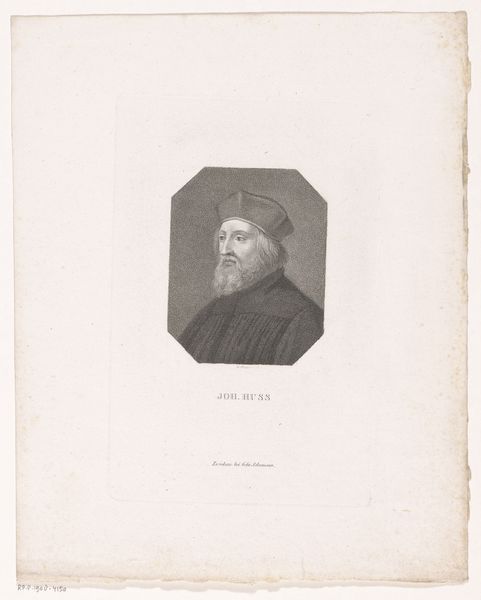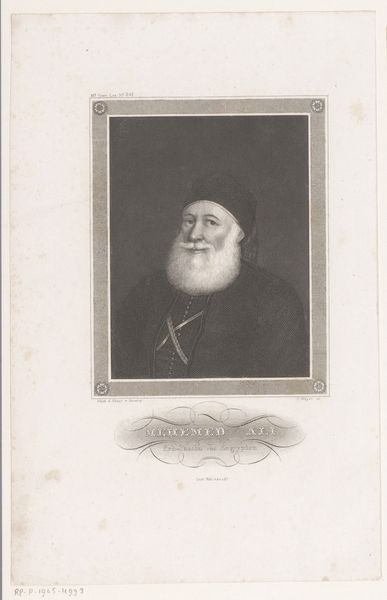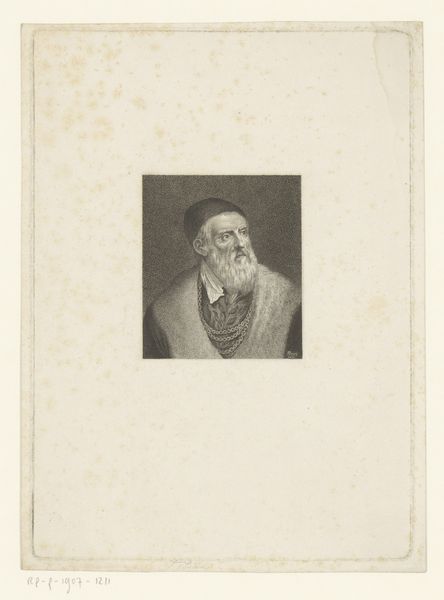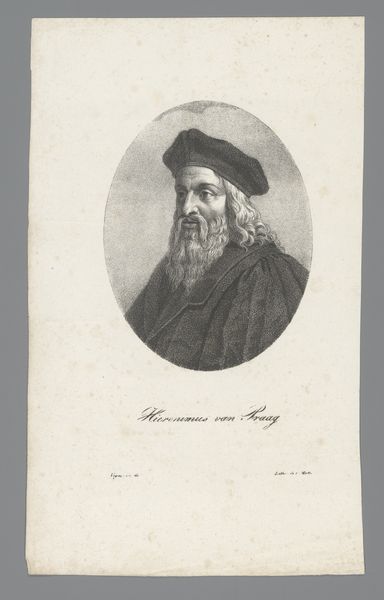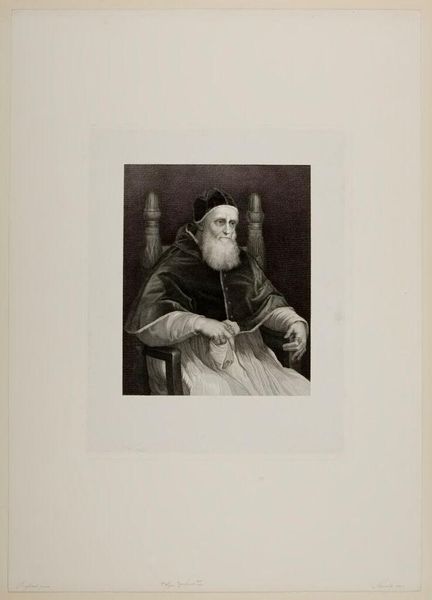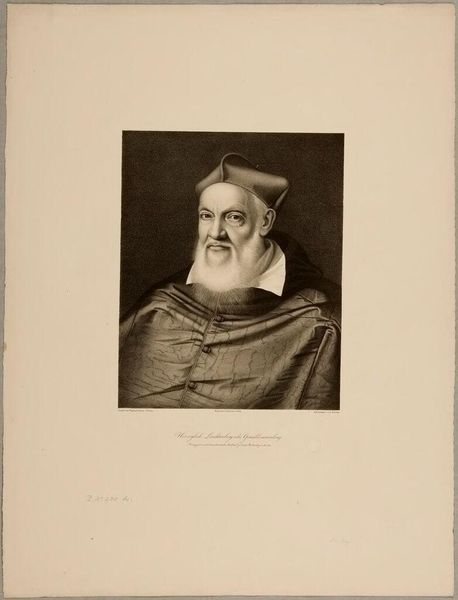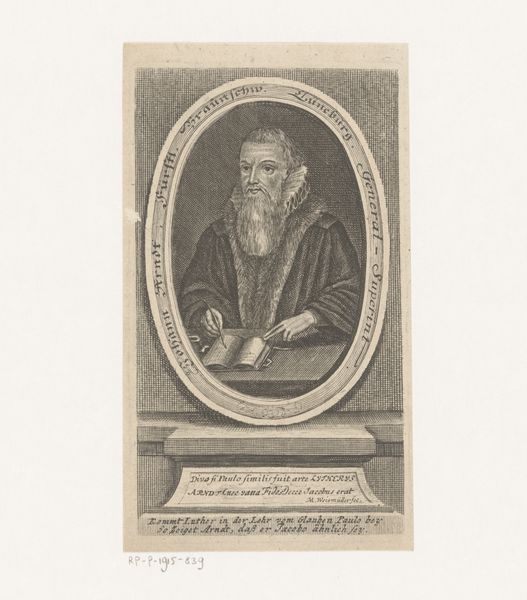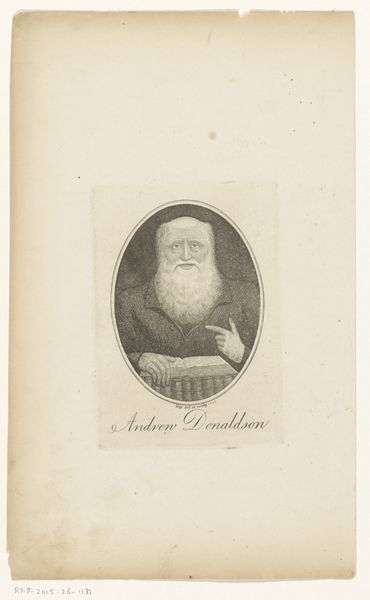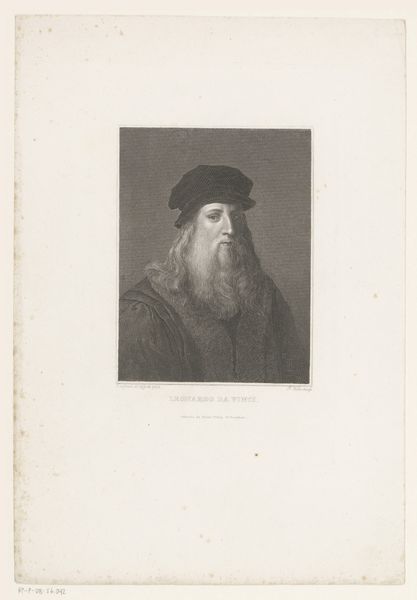
print, engraving
# print
#
history-painting
#
engraving
Dimensions: 403 mm (height) x 330 mm (width) (Plademål)
Curator: Here we have Edvard Sonne's "Pave Julius II," created in 1836. It is an engraving, a print rendering of a historical figure. Editor: He seems… heavy. I mean, not in the physical sense, although the bulk of the robes adds to that. But the mood—stern, powerful, maybe a little weary. Look at those eyes! Curator: Indeed. Sonne meticulously uses line and shadow to convey a sense of gravitas appropriate for the pontiff. Note the use of chiaroscuro; the strong contrasts emphasize the folds of his garments and the texture of his beard. Editor: The light almost feels like it’s bearing down on him, concentrating on the weight of responsibility on his shoulders. The ornate chair, instead of projecting regality, feels almost like a cage. He’s trapped in his position, no? Curator: Perhaps. Or it may simply serve as a visual anchor, a formal element to frame the subject and reinforce his authority. Semiotically, the chair represents power. Sonne's understanding of composition really is impressive here. Editor: True, the symbolism of power. But I see the face. All those etched lines around his eyes and mouth. They speak to burdens carried, secrets kept, decisions made, probably tough ones. You know? Maybe that's why I see him less as a ruler and more as… a man. Curator: A compelling interpretation. Sonne does invite multiple readings through his sophisticated rendering of light and form, inviting one to delve beyond the immediately representational. The formal restraint only accentuates the possibility of emotional depths. Editor: So, what started out as a somber portrait actually gave me a moment of thoughtful contemplation about human nature itself. How sneaky and surprising is that? Curator: Art's ability to foster exactly that kind of deeper thought and connection is always what intrigues me.
Comments
No comments
Be the first to comment and join the conversation on the ultimate creative platform.
